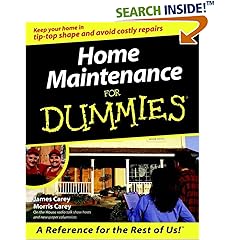Working with electricity is neither difficult nor dangerous as long as you understand this powerful phenomenon and treat it with respect. Here you'll learn how your system works and how to assess it, upgrade it, add to it and make repairs. You'll also be able to tell whether a wiring job is within your reach or best left to a licensed electrical contractor.
If you're a beginner, read the section carefully before attempting any electrical projects. Pay special attention to all safety precautions and learn how to safely use electrical testers and tools.
Are you looking for home electrical items -- such as switches and fuse boxes -- or parts and accessories for ones you already have? Try our dedicated electrical supply pages here:
Just what is electricity? Think of it as a stream of negatively charged particles, called electrons, flowing at 186,000 miles per second (the speed of light) through a conductor, a wire, much the way water flows through a pipe.
The electrical pressure that causes current to flow through a conductor is measured in volts. Light fixtures and small appliances operate on 120 volts, and electric ranges and other heavy-duty appliances require 240 volts.
Resistance to the flow of electrons will vary with different materials. Copper is a good conductor and has low resistance, unlike plastic wire insulation that has very high resistance.
The rate that electric current flows is measured in amperes (amps). One ampere is the amount of current that will flow through one ohm—a measure of resistance—with a pressure of 1 volt.
The amount of power delivered by a current under pressure to a lamp or appliance is measured in watts. Watts, volts and amps are all interrelated. If you know two of the variables, you can figure out the third (see "Amps, Volts and Watts" below). You can also determine the cost of running appliances and equipment.
Simple circuits. To do work, electricity must flow in a closed loop or circuit from a power source to a load, such as a light bulb, then back to the source. If the circuit is interrupted by a switch or blown fuse, the current flow stops.
How power reaches your home. The electricity generated by a power plant and delivered to your home by your local utility is called alternating current (AC) because it flows alternately, first in one direction, then in the opposite, completing 60 cycles every second. Batteries produce direct current (DC) that flows through a circuit in only one direction. From the power plant, current travels over high-voltage transmission lines to substations, where transformers reduce the voltage for distribution to local lines. Neighborhood transformers lower the voltage to 120 and 240 volts for house hold use.
Homes built after the late 1960s will have 100-amp (or larger), 120- and 240- volt, three-wire service. Some homes built in the early 1900s may still have 30- amp, 120-volt, two-wire service. The most common pre-1960s service was three-wire, from 30 to 60 amps.
Electrical service may be supplied through overhead or underground wires. The utility's overhead service drop is connected to the home's service-entrance wires at the weatherproof service head, where they are installed in conduit to the meter enclosure. For underground services, the utility's direct-buried wires run to the home, where they emerge from the ground in a short conduit sleeve and connect inside the electrical meter box.
From the meter enclosure, the service-entrance wires run to the service panel usually inside your home where they terminate at the main service disconnect (see next page). The service disconnect is the first overcurrent protective device in the home; therefore, the length of unfused service-entrance wires inside the home must be kept as short as possible. From the service panel, electricity is distributed by branch circuits.
Recommended Reading
Book Description:
Topics include:
Reviews:
Recommended Products
More

Want to learn more about home electricity? Visit our home electricity library.
If you need home electricity supplies, browse through the products on these pages:
- Home electrical DIY supplies -- circuit breakers, conduit wiring, switches, ... we got 'em all ... and in stock!
- Lights, lamps and lighting supplies galore -- CLICK HERE!

A simple circuit. In a typical lighting circuit, current flows at 120 volts from a common hot bus bar in the main service panel through a hot wire (usually color-coded black) to a light bulb's wire filament, where it produces heat and light. From the bulb, a neutral wire (usually color-coded white) completes the circuit path back to the panel's neutral bar, which is grounded, connected to the earth. If a circuit malfunctions, a grounding wire (bare copper or color-coded green), running with the hot and neutral wires, provides a safe path to the source for abnormal current flow. The grounding wire enables overcurrent protective devices, like circuit breakers, to work.
Amps, Volts and Watts: How to convert
Use these formulas to determine unknowns. E.g., a 1,200-watt heater will draw 10 amperes at 120 volts.
- Volts = watts ÷ amps
- Watts = volts x amps
- Amps = watts ÷ volts
To determine the cost of running an electrical item, all you need to know is:
- A thousand watts = 1 kilowatt.
- A kilowatt used for 1 hour = 1 kilowatt-hour (kwh), which is the unit utilities use to measure and bill you for electricity.
Useful links:
